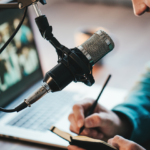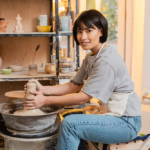A new social media app is anti-AI — and its stance drew more than half a million new users within a week. I tried the app this week, I can see why it appeals to artists.
The Cara app bans users from posting AI-generated images and tries to protect human-created art from hungry AI models. The result is an Instagram-style platform filled with original artwork.
Though Cara launched in January 2023, it has only gained traction recently. In the past week, the app went from 40,000 users to 650,000.
“We were not expecting this,” Cara founder and freelance artist/photographer Jingna Zhang told The Washington Post.
Curious about https://t.co/bIBAmGiZdX? We’re a platform with portfolio AND social feed. We have an AI detector that filters out AI images, custom home feed you can control, and custom crop tool for image thumbnails! ✨ Here’s a thread on how it works:?? pic.twitter.com/sTDYTuym5Z
— Cara: Art & Social (@Cara_HQ) April 12, 2023
Cara’s creator-first mission means that AI images are unwelcome; the app will automatically detect and remove them.
The app also automatically adds “NoAI” tags to all images as a “do not enter” sign for AI scrapers. There’s no guarantee that the tag will stop unethical AI development, but it acts as a first step. And it promises that human-created art isn’t opted in for AI training by default.
Related: I Tried 3 AI Headshot Generators, 1 Might Work for LinkedIn
Cara is entirely volunteer-run; Zhang only has a handful of volunteers helping her with the platform and has been paying for operating costs herself, with the help of donations.
The sudden influx of hundreds of thousands of new users caused the app to crash on Sunday, highlighting the growing pains of Cara’s newfound audience.
The app’s uptick in users could be due to recent reports that Meta will use Facebook and Instagram posts to train new AI.
Related: Meta’s AI Chief Is in the Middle of a Public Clash With Elon Musk
Meta began notifying users last week that starting June 26, photos, art, posts, and even post captions are fair game for Meta’s AI chatbots to consume as part of their training. Meta is not required to offer opt-outs by law in the U.S. but does have to in the E.U. and U.K.
Cara gained popularity quickly after Meta’s announcement as a haven for artists who don’t want their work accessed by AI from Meta or other big tech companies.
Zhang’s Cara bio partly reads “I believe if major companies won’t take a stand to protect us, then we should build a home for ourselves.”
Related: I Made My Dream Home For Free With Architecture AI Vitruvius
Zhang has taken legal action against big AI companies, filing a lawsuit against Google in May over the tech giant allegedly using her copyrighted work to train its AI image generator.
She won another lawsuit in the same month over a copyright-protected image.
How Cara works
I downloaded the app, made an account, and instantly had access. At first glance, the app looks like a calmer Instagram for artists.
I didn’t see any videos or ads — just a scrolling feed of incredible artwork.
Related: I Tried Airchat, Silicon Valley’s Trendy Social Media App
When I clicked on an artist’s profile, I saw their portfolio, timeline, about page, and likes.
There was also a built-in job board with 194 posted jobs at the time of writing. Clicking on a job posting redirected me away from the app and to the right website to apply for the job.
Some new job listings from Riot Games & WildBrain just dropped on https://t.co/1n4NiZbBpZ pic.twitter.com/60qp3dtu06
— Cara: Art & Social (@Cara_HQ) April 11, 2024
I can see Cara becoming a way to create a portfolio of digital art to showcase work when looking for opportunities in the field.
The app already has a thriving community of artists who like, comment, and encourage each other’s work.
The narrow focus of the app, on art alone, kept the app from getting overwhelming but, at the same time, it could keep non-artists from joining.
Related: I Tried Grifin, the ‘Invest As You Shop’ App: What to Know
At the moment, Cara is scaling up quickly and building up a community of artists who want to protect their work from AI.
It feels comparable to Instagram, but with a focused mission that rejects passively accepting AI training on human art.
I’m curious to see how the app adapts to demand, and where it goes from here.




![Just released: our 3 top income-focused stocks to buy before June [PREMIUM PICKS]](https://moneymindhub.com/wp-content/uploads/2024/05/Three-fingers-1200x675-150x150.jpg)






